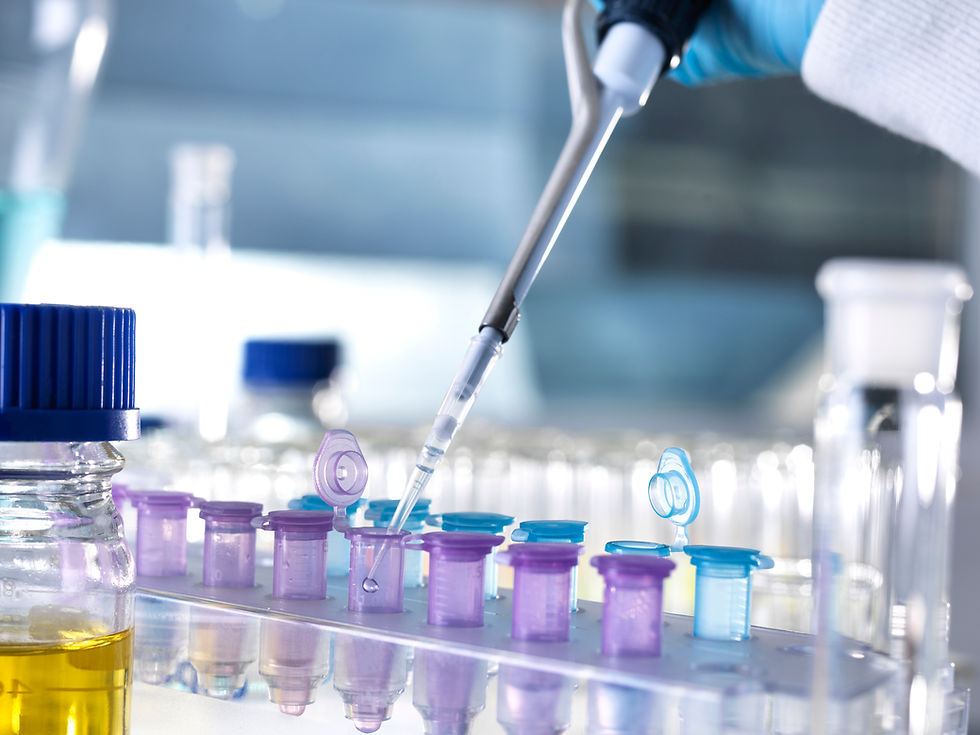Do you know what this test is?!

NAAT is a nucleic acid test, also called the "NAT" test (nucleic acid amplification test - "NAAT"). It benefits from the biochemical technique used to detect a virus or bacteria. These tests were developed to shorten the window period, a period that occurs between the patient's infection and the moment when the ELISA tests become positive.
The term includes any test that directly detects the genetic material of the infecting organism or virus. Several methods are included in this group, among them are the methods based on the polymerase chain reaction (PCR).
Method is based on the amplification of RNA and DNA by Polymerase Chain Reaction - PCR in real time, which, from a small amount of copies of nucleic acid, makes it possible to detect the presence of the infectious agent earlier.
NAAT is considered the reference standard for the diagnosis of SARS-CoV-2 infection. Ag-RDTs are not intended to replace NAAT, but can be implemented as a complementary strategy as there are many that are highly reliable, easy to use, and provide quick results. Ag-RDTs can be used where NAAT is not available or where results take longer than 48 hours. Adoption of Ag-RDT is encouraged to expand test accessibility and could be considered as follows:
In symptomatic individuals in high-prevalence settings, confirmation of positive Ag-RDT results by NAAT is not required. Negative Ag-RDT results can be confirmed by NAAT at clinical discretion2.
In symptomatic individuals in low-prevalence settings, confirmation of negative Ag-RDT results by NAAT is not required. Positive results for Ag-RDT can be confirmed by NAAT at clinical discretion2.
In asymptomatic individuals who are contacts of confirmed or frequently exposed cases, such as employees of health care facilities and long-term care facilities, Ag-RDT results need not, however, be confirmed by NAAT, at clinical discretion2.
Differences
Test Type | Benefits | Disadvantages |
Nucleic acid amplification Through manual or automated nucleic acid amplification tests (NAAT), such as real-time reverse transcription polymerase chain reaction (rRT-PCR). | - Detects active infection - High sensitivity and specificity | - Response time from hours to days - Laborious - Requires laboratory infrastructure and qualified staff - More expensive than rapid diagnostic tests (RDTs) |
Rapid antigen test Through immunodiagnostic techniques such as lateral flow assays (LFAs), commonly called rapid diagnostic tests or Ag-RDTs. | - Detects active infection - Can be used at the point of care (external laboratories) - Easy to run - Fast results (typically less than 30 minutes), allowing for rapid implementation of infection control measures, including contact tracking - Cheaper than NAAT | - Variable sensitivity and specificity, generally inferior to NAAT - Lower sensitivity means that the negative predictive value is less than for NAAT, especially in places with a high prevalence of SARS-CoV-2 - Confirmatory NAAT testing for RDT positive is recommended in all low prevalence settings and for RDT negative in high prevalence settings - Ag-RDT negative results cannot be used to remove a contact from quarantine. |
Rapid Antibody Test Through serological techniques such as LFAs, enzyme-linked immunosorbent assays (ELISAs) or chemiluminescent immunoassays (CLIAs). | - Can be used to detect previous SARS-CoV-2 infection - Can be used at the point of care (external laboratories) or in formats with higher performance in laboratories - Easy to run - Quick results - Cheaper than NAAT | - The clinical significance of a positive result is still under investigation - Positive results do not guarantee the presence of neutralizing antibodies or protective immunity - should not be used to determine active infections in clinical care or for contact tracking purposes. - The interpretation of Ab-RDT results depends on the time of disease, clinical morbidity, epidemiology and prevalence within the environment, the type of test used, the validation method and the reliability of the results. |
Techniques used to diagnose SARS-CoV-2 – Advantages and Disadvantages (WHO, 2020).
For more information, visit the official website of the World Health Organization in Portugal.
Science in 5 series - Episode #32 / In our unequal world, how does inequity impact our fight against COVID-19? How can we address it? WHO’s Dr Mariângela Simao explains in Science in 5 this week. For more information: https://www.who.int/emergencies/disea...
Source: WHO and Wikipedia

